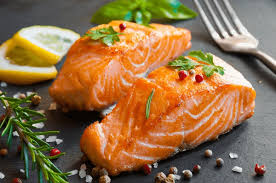INTRODUCTION
Salmon is a delectable fish that offers culinary possibilities to cater to different preferences. Whether you have a penchant, for seafood or aim to incorporate proteins into your meals mastering the art of cooking salmon can elevate your gastronomic experiences. This blog post will walk you through the process of preparing a salmon dish from selecting the fish to honing diverse cooking techniques and presenting it with flair. Join us on this journey as we delve into the nuances of cooking salmon and learn how to create dishes that will tantalize even the most discerning taste buds.
Getting Started; Choosing and Preparing Your Salmon
Salmon comes in forms, such as fresh, frozen or smoked. Opting for high quality fish is crucial for achieving results when cooking salmon. In this segment we will discuss considerations for selecting and preparing your salmon.
Picking the Right Salmon Variety
Atlantic Salmon; This variety is commonly found in grocery stores. Boasts a flavor with a delicate texture making it suitable, for various cooking techniques.
Pacific Salmon; Salmon such as Chinook (King) Sockeye (Red) Coho (Silver) and Pink salmon each offer a taste and texture. Chinook salmon is known for its buttery flavor while Sockeye salmon stands out with its red color and robust taste.
When it comes to choosing between caught and farmed salmon keep in mind that caught salmon is typically more flavorful as it comes from natural environments whereas farmed salmon tends to have a milder taste since it is raised in controlled settings. Consider your taste preferences and sustainability concerns before making a decision.
To ensure the freshness of your salmon;
Check for eyes and bright color; Fresh salmon should have eyes and vibrant pinkish orange flesh.
Test firmness and texture; Press the flesh gently. It should be firm and bounce back when touched. Avoid fish that feels soft or mushy.
Do a smell test; Fresh salmon should have a scent; avoid any fish, with a strong fishy odor.
Before cooking your salmon;
If needed scale the fish using a scalar or the back of a knife to remove scales.
Start by working your way from the tail, to the head gently scraping against the scales.
Cleaning and gutting; create a cut along the fish’s belly. Take out the entrails. Rinse the inside thoroughly with water.
Fillet Preparation; if you prefer fillets carefully separate the flesh from the bones using a knife. Begin by slicing to the backbone and moving towards the tail.
Pin Bone Removal; Feel along the fillet to find any pin bones. Use tweezers or fish bone pliers to pull them out.
By mastering how to select and prepare your salmon correctly you’ll lay a foundation for a cooking experience. Let’s progress to the ingredients and the directions
How to cook Salmon
4
servings10
minutes15
minutes200
kcalIngredients
- Essential Ingredients:
Salmon fillets: 4 pieces (4-6 ounces each, skin-on or skinless, depending on your preference)
Salt: 1 – 1 ½ teaspoons (adjust to taste)
Black pepper: ½ – ¾ teaspoon (adjust to taste)
- Seasoning options (choose a few or experiment):
Dried herbs: 2-3 tablespoons total (such as dill, thyme, rosemary, etc.)
Spices: 1 – 2 teaspoons total (such as paprika, garlic powder, cayenne pepper, etc.)
Lemon, lime, or orange: 1 (for zest)
Olive oil or melted butter: 2-4 tablespoons
- Optional Ingredients (depending on the recipe):
Marinades: Variable depending on the recipe (consider using 2 cups total of acidic liquids like lemon juice, vinegar, or wine; plus oils, herbs, and spices)
Dijon mustard or mayonnaise: 2-4 tablespoons (for searing)
Cedar planks: 4 planks (for grilling, 1 plank per fillet)
Poaching liquid: 8-12 cups water or broth, (plus aromatics like onions, garlic, herbs, and lemon zest)
Directions
- Oven Baking Your Salmon; Start, by preheating your oven to the recommended temperature, around 375°F (190°C).
When choosing your baking dish make sure it’s big enough, for your salmon fillets to fit comfortably. You can. Line the dish with parchment paper. Lightly grease it to prevent any sticking.
For cooking time and temperature remember that it varies depending on how thick your fillisters. As a rule bake the salmon for 12-15 minutes per inch of thickness until it reaches an internal temperature of 145°F (63°C) for perfect doneness.
To add flavor consider placing lemon, fresh herbs or a drizzle of olive oil on top of the salmon before baking.
For seared salmon start by heating a skillet or frying pan over medium high heat. Add a bit of oil or butter to prevent sticking and enhance browning.
When searing the salmon place the fillets skin side down, in the pan. Let them cook undisturbed for 3- 4 minutes to crisp up the skin. Flip them over. Continue cooking for another 2 3 minutes until they reach a temperature of 145°F (63°C).
To make a crust spread a layer of Dijon mustard, mayonnaise or a spice rub, on the flesh side of the salmon before cooking it.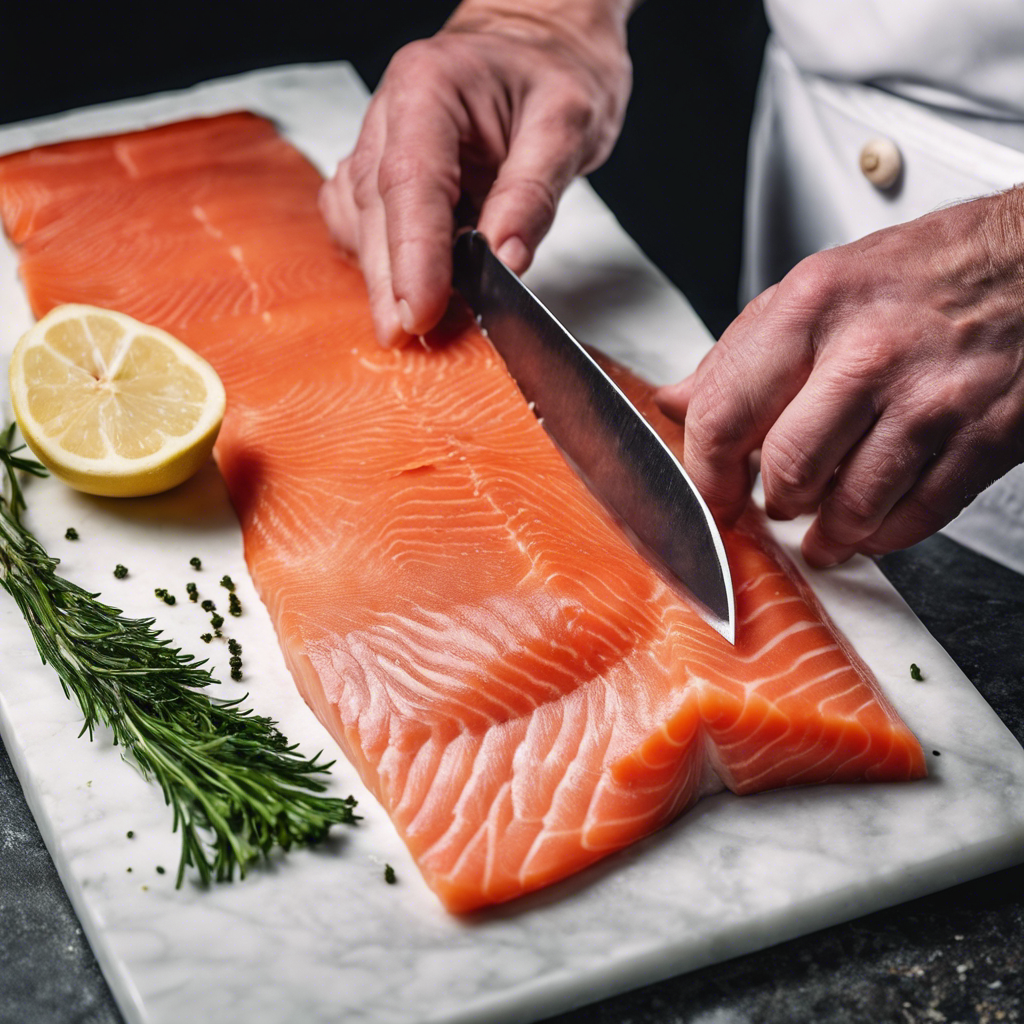
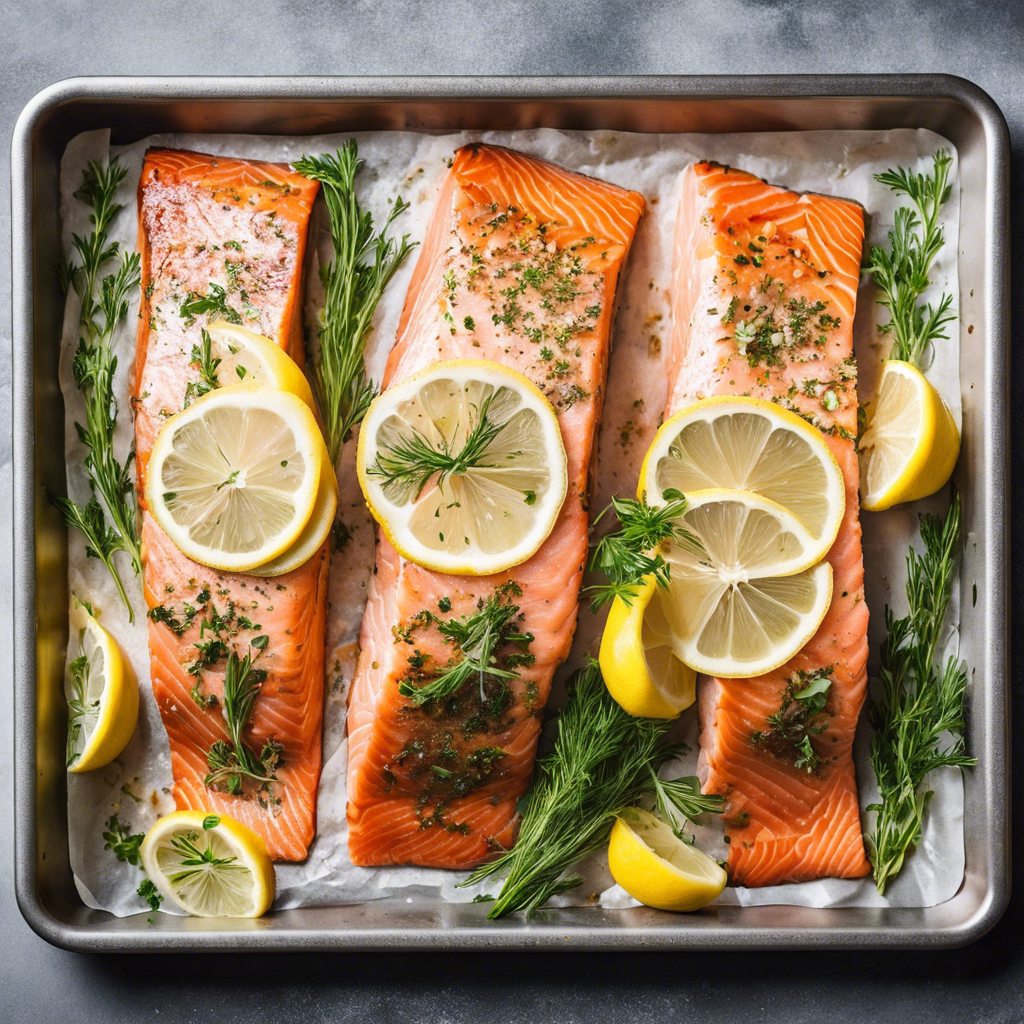
- Grilling Your Salmon; Preparing the Grill; Heat up your grill to a temperature and clean the grates well. Grease lightly to prevent sticking.
Grilling Time and Temperature; Put the salmon fillets on the grill grates with the skin side down. Grill for about 4 6 minutes on each side. Until it reaches a temperature of 145°F (63°C).
Using a Cedar Plank; For a touch grill your salmon on a soaked cedar plank. Soak the plank in water for an hour before grilling to avoid it catching fire.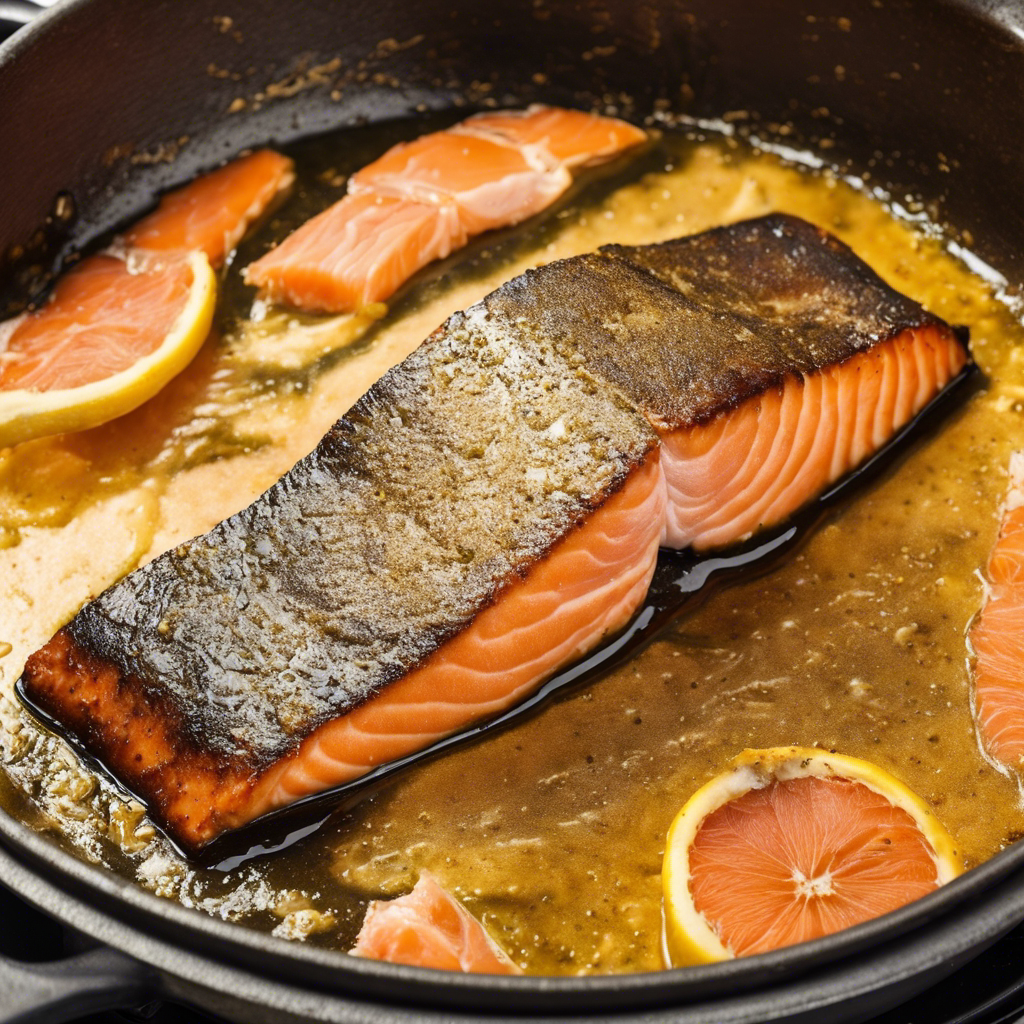
- Poached Salmon; Creating a Poaching Liquid; Mix water, broth, wine or a combo of these liquids in a skillet or saucepan. Enhance with sliced onions, garlic, herbs and lemon zest for flavor.
Poaching Temperature and Time; Bring the liquid to a simmer, over heat. Gently place the salmon fillets in the liquid. Cook for around 10 15 minutes until they flake easily with a fork.
To enhance the flavor and moisture of the salmon you can cook it by poaching in a mixture of water combined with ingredients, like wine, citrus juice or vegetable broth.
Each cooking method brings its twist to preparing salmon offering a variety of textures and flavors to experiment with. In the section we’ll delve into presenting your cooked salmon in an elegant manner.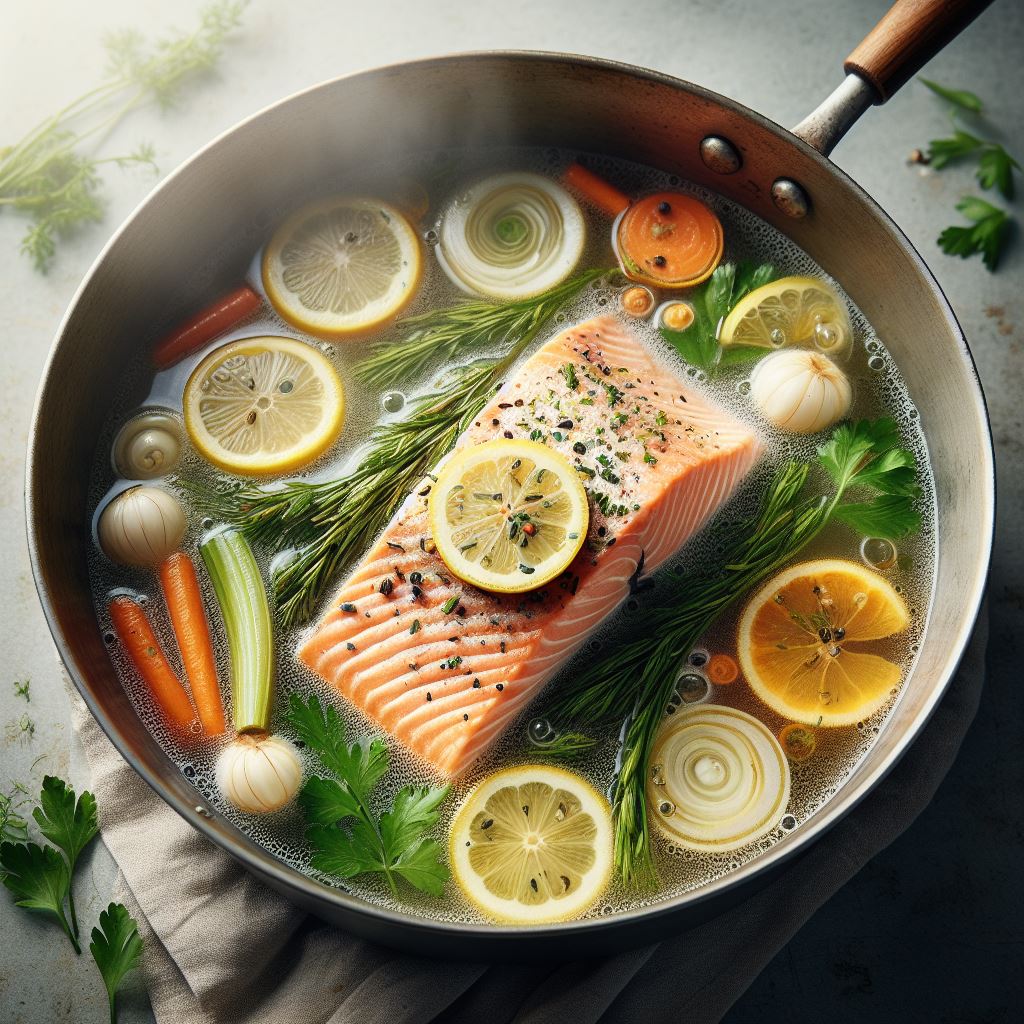
How to Flavor Your Salmon
Seasoning is key in bringing out flavors in your salmon dish. In this part we’ll discuss seasoning choices, methods of application and why marinating can be beneficial.
Selecting Seasonings
Pepper; A timeless duo that boosts salmons taste. Opt for salt or sea salt, for precise seasoning control. Exploring Flavors; try out herbs and spices to enhance the taste of your salmon. Popular choices include dill, thyme, rosemary, paprika, garlic powder and cayenne pepper.
Adding a Citrus Twist; Zesting lemon, lime or orange can give your salmon a zesty kick. Remember to grate the outer part of the fruits skin while avoiding the bitter white layer.
Ready Made Seasonings; Using made rubs and spice blends made for seafood can offer a quick and tasty option. Look for blends that complement the richness of salmon.
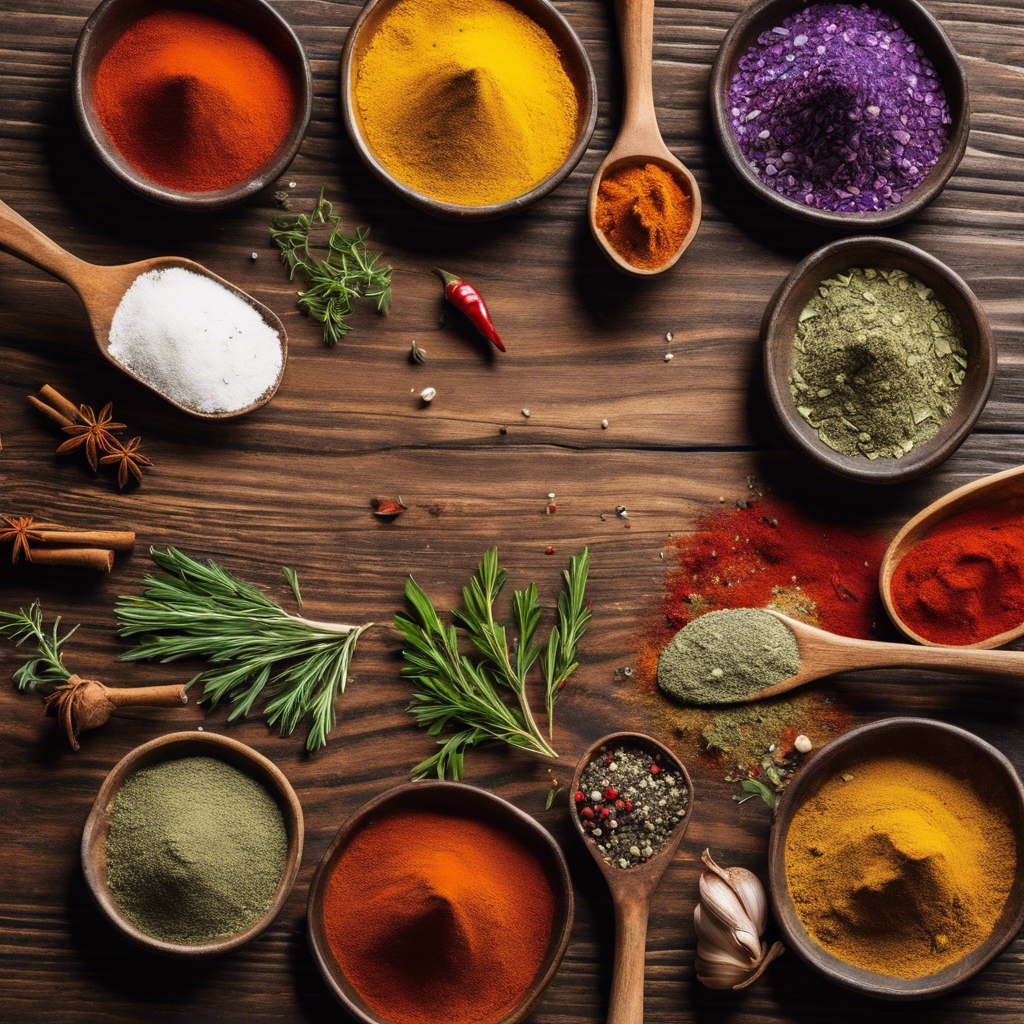
Proper Seasoning Techniques
Applying Dry Rub; Sprinkle your seasonings evenly over both sides of the salmon fillets. Gently press them onto the flesh, for flavor absorption.
Using Oil or Butter; brushing a layer of oil or melted butter, on the salmon before seasoning helps to enhance adhesion and browning.
Seasoning Inside Out; don’t forget to season both sides of the salmon – skin side and flesh side – for a delicious taste. If you’ve removed the skin make sure to season both sides
Marinating Your Salmon
Benefits of Marination; Marinating your salmon not adds flavors but also helps in tenderizing the fish.
It also helps to keep the salmon moist while cooking preventing it from becoming dry.
Acidic Marinades; Using juices, vinegar or wine based marinades can give the salmon a fresh taste. Just be careful not to marinate for long as the acidity can start to “cook” the fish.
Oil Based Marinades; Opting for oil based marinades can lock in moisture and allow the flavors to infuse into the salmon. Experiment, with a mix of herbs, spices and aromatics for flavor profiles.
By mastering how you season your salmon you can achieve a blend of flavors that enhance its richness. In the following section we will explore cooking techniques to prepare your salmon perfectly.

Grilling Your Salmon
Preparing the Grill; Heat up your grill to a temperature and clean the grates well. Grease lightly to prevent sticking.
Grilling Time and Temperature; Put the salmon fillets on the grill grates with the skin side down. Grill for about 4 6 minutes on each side. Until it reaches a temperature of 145°F (63°C).
Using a Cedar Plank; For a touch grill your salmon on a soaked cedar plank. Soak the plank in water for an hour before grilling to avoid it catching fire.

Poached Salmon
Creating a Poaching Liquid; Mix water, broth, wine or a combo of these liquids in a skillet or saucepan. Enhance with sliced onions, garlic, herbs and lemon zest for flavor.
Poaching Temperature and Time; Bring the liquid to a simmer, over heat. Gently place the salmon fillets in the liquid. Cook for around 10 15 minutes until they flake easily with a fork.
To enhance the flavor and moisture of the salmon you can cook it by poaching in a mixture of water combined with ingredients, like wine, citrus juice or vegetable broth. Each cooking method brings its twist to preparing salmon offering a variety of textures and flavors to experiment with. In the section we’ll delve into presenting your cooked salmon in an elegant manner
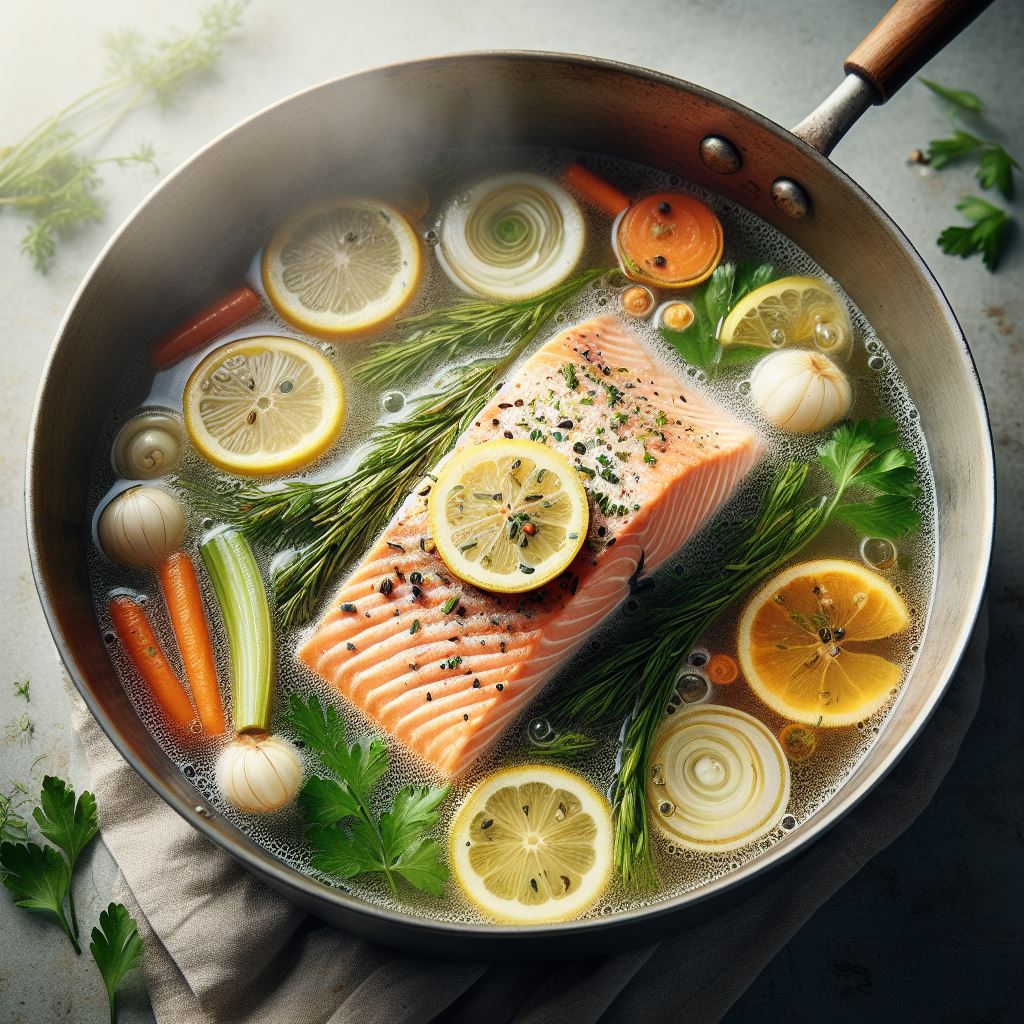
Presenting Your Salmon
After investing time and care into cooking your salmon it’s crucial to present it in a way that elevates its taste and creates a delightful dining experience. This segment will cover aspects of serving your salmon including pairing it with side dishes, artistic plating techniques and selecting complementary sauces for your dish.

Pairing Your Salmon with Complementary Sides
Vegetables; Lightly steamed or roasted vegetables like asparagus, broccoli or green beans complement the richness of salmon. You might also opt for serving a salad dressed in a vinaigrette.
Carbohydrates; Select a carbohydrate to complete your meal. Choices such as potatoes, quinoa wild rice pair nicely, with salmon.
When preparing your salmon dish consider incorporating fruits, like oranges or grapefruits for a zesty touch that balances out the richness of the fish.
Tips for Plating Your Salmon;
Decide whether you want to keep the skin on or remove it before serving. Leaving the skin on can add appeal and a crispy texture to your dish.
Enhance the presentation with herbs such as dill, parsley or chives sprinkled over the salmon or used as garnishes.
Pay attention to how you arrange the salmon fillet on the plate considering placement of side dishes and using contrasting colors and textures for an aesthetically pleasing display.
Recommended Sauces to Serve with Salmon;
1. Lemon Dill Sauce; This classic combination of lemon and bright dill complements the flavors of salmon.
2. Creamy Dijon Sauce; A rich and tangy sauce made with Dijon mustard, cream and lemon juice adds an element to your salmon.
3. Teriyaki Glaze; Elevate your salmon dish with this savory glaze made from soy sauce, ginger, garlic and brown sugar, for an Asian inspired twist.Beurre Blanc is a sauce crafted with white wine, shallots and butter to elevate the flavor profile of your salmon dish.
By paying attention to the side dishes, presentation techniques and complementary sauces you can elevate the dining experience. Create a stunning and delicious meal. In the following section we will delve into the methods, for storing and reheating leftover salmon to maximize your endeavors.
Keeping Your Salmon Fresh
After savoring a salmon feast you may have some leftovers that you wish to preserve. Knowing how to store and reheat your salmon correctly is key in preserving its taste and texture. In this segment we will provide insights on storing leftover salmon and reheating it without compromising its moisture.
Appropriate Storage of Leftover Salmon
Allowing the Salmon to Cool; Let the cooked salmon cool down to room temperature before placing it in the refrigerator. Leaving it out for periods can promote growth.
Airtight Storage; Transfer the salmon into an airtight container. Wrap it securely with plastic wrap. Be sure no air can seep in as exposure can lead to dryness.
Refrigeration Timing; Ensure that you refrigerate the salmon within two hours of cooking, for freshness.
You can store it in the refrigerator for 3 to 4 days.
For long term storage if you want to keep the salmon for a period it’s best to freeze it. Wrap it tightly in plastic wrap. Put it in a container or freezer bag that’s safe, for the freezer. You can keep it in the freezer for 2 to 3 months.
To reheat your salmon without drying it out;
Oven Reheating; Preheat the oven to a temperature, 275°F (135°C). Place the salmon on a baking sheet. Loosely cover it with foil to retain moisture. Reheat for 10 15 minutes or until heated through.
Stovetop Reheating; Heat a stick skillet over low to medium heat. Add an amount of oil or butter to the pan. Gently place the salmon in, skin side down. Cover the pan. Cook for 3 4 minutes or until heated through.
Microwave Reheating; Put the salmon on a microwave dish and loosely cover it with a damp paper towel. Microwave at power, for intervals checking doneness after each interval.
For cold salmon applications;
Leftover salmon is delicious when served cold in salads, sandwiches or, as a topping for crackers or bagels.
A heads up reheating salmon times may make it dry and less flavorful. It’s best to enjoy reheated salmon within 1 2 days of refrigeration. With these tips, on storing and reheating you can savor your leftover salmon without compromising its taste and texture.
Great job! Now you’ve mastered the art of selecting, preparing, seasoning, cooking, serving and storing salmon. By following these steps you can whip up salmon dishes that will wow your ones. Have fun exploring delights with this healthy fish!
Scotti Davis is an experienced recipe blogger and his Haute cuisine knowledge is reflected in his ingenious dishes. He has also developed a talent for pairing tastes perfectly and a passion for sharing his love for cooking meals, and these strengths enable him to create an interesting and mouthwatering menu.


